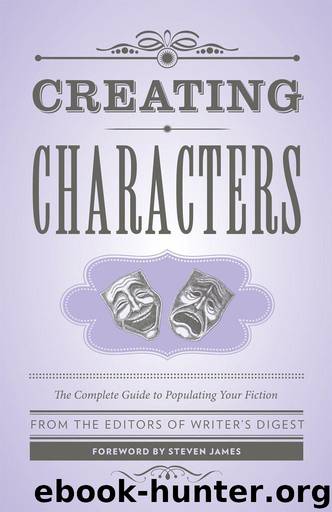Creating Characters: The Complete Guide to Populating Your Fiction by Writer's Digest Editors

Author:Writer's Digest Editors [Editors, Writer's Digest]
Language: eng
Format: epub
Publisher: F+W Media
Published: 2014-10-02T23:00:00+00:00
ESCHEW THE TOTALLY EVIL ANTAGONIST
Pure evil is dull, unbelievable, and predictable. Readers cannot relate to it. Sometimes evil characters devolve into cartoons and become jokes, thus killing suspense or tension. Other times they’re boring: Yeah, yeah, the serial killer who tortured small animals as a child and is now stalking women that remind him of his mother … yawn. One way to prevent a truly dark character from becoming a caricature is to make her a viewpoint character—because no character is the embodiment of evil in her own mind. No one is the villain in his own story. George R.R. Martin did this effectively in his A Song of Ice and Fire series. In its first book, A Game of Thrones, Jaime and Cersei Lannister, the incestuous brother and sister, seem to be evil personified, the characters readers love to hate. In subsequent books, however, they become viewpoint characters, making it difficult not to empathize with them.
If your book’s structure makes it impossible to show the antagonist’s viewpoint, place one of the viewpoint characters in that position and have him try to understand his perspective. Perhaps your heroine is struggling to find day care for her infant while your villain is looking at nursing homes for his aging father. Or they could both lose something dear to them or confront job-related problems. It could even be something small: Your protagonist could get stuck in a traffic jam, while your antagonist’s flight is delayed by the weather. The point is to show similarity, humanity, and an overlap of feelings and experience between the protagonist and the antagonist. This will enlarge the reader’s perception of the antagonist, even if subconsciously.
Download
This site does not store any files on its server. We only index and link to content provided by other sites. Please contact the content providers to delete copyright contents if any and email us, we'll remove relevant links or contents immediately.
Asking the Right Questions: A Guide to Critical Thinking by M. Neil Browne & Stuart M. Keeley(5355)
Autoboyography by Christina Lauren(5086)
Dialogue by Robert McKee(4160)
Eat That Frog! by Brian Tracy(4149)
Sticky Fingers by Joe Hagan(3911)
Journeys Out of the Body by Robert Monroe(3460)
Annapurna by Maurice Herzog(3296)
Full Circle by Michael Palin(3268)
Elements of Style 2017 by Richard De A'Morelli(3235)
Schaum's Quick Guide to Writing Great Short Stories by Margaret Lucke(3187)
The Art of Dramatic Writing: Its Basis in the Creative Interpretation of Human Motives by Egri Lajos(2857)
The Diviners by Libba Bray(2800)
Why I Write by George Orwell(2773)
The Mental Game of Writing: How to Overcome Obstacles, Stay Creative and Productive, and Free Your Mind for Success by James Scott Bell(2766)
In Patagonia by Bruce Chatwin(2755)
Atlas Obscura by Joshua Foer(2704)
The Fight by Norman Mailer(2700)
Venice by Jan Morris(2430)
The Elements of Style by William Strunk and E. B. White(2376)
